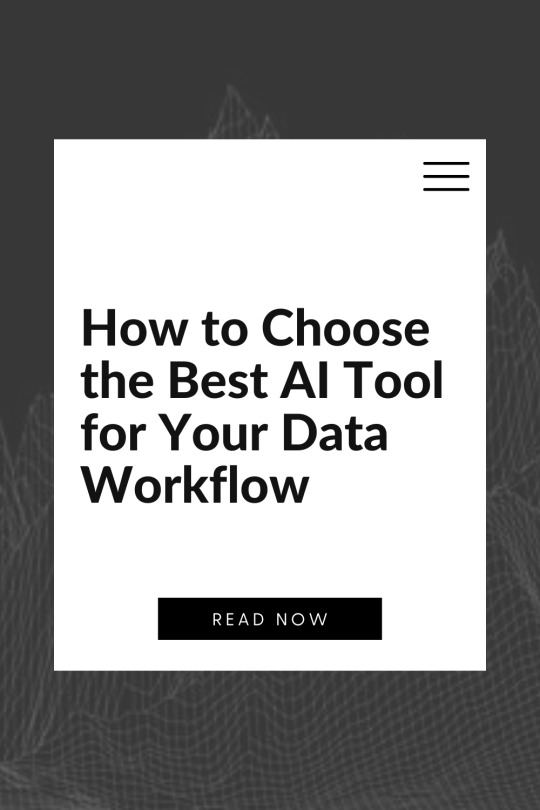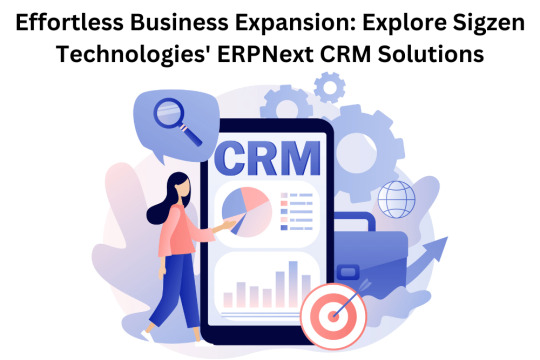#workflow automation solutions
Explore tagged Tumblr posts
Text
In the fast-moving digital world, enterprises cannot rely on basic software alone. They need powerful, responsive applications that streamline operations and support growth. Business application development is important in helping companies stay competitive, reduce manual tasks, and improve decision-making across departments.
This blog explores how custom business applications can change the way your company works, especially when using Microsoft’s set of automation tools. Microsoft Power Automate consultants help organizations create solutions that eliminate repetitive processes and improve productivity, from managing workflows to automating approvals.
Whether you're a small business or a growing organization, using Microsoft Power Automate services can greatly improve efficiency. These services connect your existing systems like SharePoint, Dynamics 365, Teams, Outlook, and hundreds of third-party apps, allowing data to flow smoothly between them. This eliminates the necessity of manually entering data or switching between systems. The blog also explains how teams can more easily create applications without much coding, thanks to low-code platforms. With tools like Power Automate and Power Apps, businesses can quickly launch apps for internal use, HR management, inventory control, finance workflows, or customer service improvements.
Additionally, the article shares real-life examples where automation has helped businesses reduce costs, improve accuracy, and grow operations. You’ll also learn how working with experienced Microsoft Power Automate consultants can help make the implementation process smoother, avoiding common challenges and ensuring the solution fits your business needs.
If you want to understand how business application development and the right automation tools can give your company an advantage, this blog is a great read. It offers insights into current trends and outlines the steps to get started with Microsoft Power Automate services.
Stay ahead of the competition and learn how to make the most of business applications that work efficiently, not harder.
#hire microsoft power automate consultants#workflow automation solutions#microsoft power automate consultants#power automate solutions provider#microsoft power automate services#power automate consulting providerpower automate consulting services#power automate development services
0 notes
Text
Jayson Murphy IT service

Website: http://jaysonmurphyitservicer.com/
Address: 609 New York Ave, Brooklyn, NY 11203, USA
Phone: 917-577-3337
Jayson Murphy IT Service is a comprehensive provider of managed IT solutions tailored to meet the unique needs of businesses. With a focus on enhancing operational efficiency and ensuring robust cybersecurity, we offer a range of services including network management, cloud solutions, data backup, and IT consulting. Our team of experienced professionals is dedicated to delivering reliable support and innovative technology strategies that empower organizations to thrive in a digital landscape. At Jayson Murphy IT Service, we prioritize customer satisfaction and work closely with our clients to develop customized solutions that drive growth and success.
Business Email: [email protected]
Facebook: https://facebook.com/abdulmanufacturerlimited
Twitter: https://twitter.com/abdulmanufacturerlimited
Instagram: https://instagram.com/abdulmanufacturerlimited
TikTok: https://tiktok.com/@abdulmanufacturerl
#IT services#Managed IT services#IT support#IT consulting#Technology solutions#IT staff training#Cybersecurity training#Software training workshops#Technology bootcamps#IT certification programs#Custom software development#E-commerce solutions#CRM implementation#Workflow automation solutions#Digital transformation services#IT performance monitoring#Network monitoring tools#Application performance analysis#IT health checks#Data analytics services#Brooklyn NY IT services#IT support in Brooklyn NY#Managed IT services Brooklyn NY#Cybersecurity Brooklyn NY#IT consulting Brooklyn NY#Remote work solutions#Team collaboration tools#Video conferencing solutions#Unified communication systems#Project management software
1 note
·
View note
Text
IT Visionists - Business Automation Experts
IT Visionists are business automation experts, who offer innovative solutions to streamline processes and drive efficiency.
Stop Wasting Time, and Start Feeling Efficient!
Craft your perfect business solution, streamline operations and empower your team. Achieve more today!
Contact Us at - [email protected]

1 note
·
View note
Text

Magtec ERP: Your one-stop solution for a paperless and efficient business. Say goodbye to piles of paperwork and hello to streamlined approvals!
#magtec#erp#paperless#efficient#business#streamlined#approvals#digitalization#productivity#automation#workflow#solutions#technology#innovation#digitaltransformation#efficiency#documentmanagement#processimprovement#businessmanagement#officeautomation#digitaloffice#smartbusiness#cloudsolution#businesssoftware#workplaceefficiency#digitalrecords#magtecsolutions
2 notes
·
View notes
Text
Get Organized: ERPNext Distribution by Sigzen Makes It Easy
In today’s fast-paced Running a business can be tough, especially when things get messy. But what if there was a way to make it all simpler. That’s where ERPNext Distribution comes in. This awesome tool helps you manage your stuff like inventory, deliveries, and ordering without any hassle. It’s like having a helper for your business tasks. With ERPNext Distribution, you can say goodbye to…

View On WordPress
#Business Automation#ERP Integration#ERP Software Solutions#Inventory Management System#Procurement Management#Resource Planning#Stock Control#Workflow Optimization
2 notes
·
View notes
Text

How to Choose the Best AI Tool for Your Data Workflow
AI isn’t just changing the way we work with data, it’s opening doors to entirely new possibilities. From streamlining everyday tasks to uncovering insights that were once out of reach, the right AI tools can make your data workflow smarter and more efficient. But with so many options out there, finding the one that fits can feel like searching for a needle in a haystack. That’s why taking the time to understand your needs and explore your options isn’t just smart, it’s essential.
In this guide, we’ll walk you through a proven, easy-to-remember decision-making framework: The D.A.T.A. Method: a 4-step process to help you confidently choose the AI tool that fits your workflow, team, and goals.

The D.A.T.A. Method: A Framework for Choosing AI Tools
The D.A.T.A. Method stands for:
Define your goals
Analyze your data needs
Test tools with real scenarios
Assess scalability and fit
Each step provides clarity and focus, helping you navigate a crowded market of AI platforms with confidence.
Step 1: Define Your Goals
Start by identifying the core problem you’re trying to solve. Without a clear purpose, it’s easy to be distracted by tools with impressive features but limited practical value for your needs.
Ask yourself:
What are you hoping to achieve with AI?
Are you focused on automating workflows, building predictive models, generating insights, or something else?
Who are the primary users: data scientists, analysts, or business stakeholders?
What decisions or processes will this tool support?
Having a well-defined objective will help narrow down your choices and align tool functionality with business impact.
Step 2: Analyze Your Data Needs
Different AI tools are designed for different types of data and use cases. Understanding the nature of your data is essential before selecting a platform.
Consider the following:
What types of data are you working with? (Structured, unstructured, text, image, time-series, etc.)
How is your data stored? (Cloud databases, spreadsheets, APIs, third-party platforms)
What is the size and volume of your data?
Do you need real-time processing capabilities, or is batch processing sufficient?
How clean or messy is your data?
For example, if you're analyzing large volumes of unstructured text data, an NLP-focused platform like MonkeyLearn or Hugging Face may be more appropriate than a traditional BI tool.
Step 3: Test Tools with Real Scenarios
Don’t rely solely on vendor claims or product demos. The best way to evaluate an AI tool is by putting it to work in your own environment.
Here’s how:
Use a free trial, sandbox environment, or open-source version of the tool.
Load a representative sample of your data.
Attempt a key task that reflects a typical use case in your workflow.
Assess the output, usability, and speed.
During testing, ask:
Is the setup process straightforward?
How intuitive is the user interface?
Can the tool deliver accurate, actionable results?
How easy is it to collaborate and share results?
This step ensures you're not just selecting a powerful tool, but one that your team can adopt and scale with minimal friction.
Step 4: Assess Scalability and Fit
Choosing a tool that meets your current needs is important, but so is planning for future growth. Consider how well a tool will scale with your team and data volume over time.
Evaluate:
Scalability: Can it handle larger datasets, more complex models, or multiple users?
Integration: Does it connect easily with your existing tech stack and data pipelines?
Collaboration: Can teams work together within the platform effectively?
Support: Is there a responsive support team, active user community, and comprehensive documentation?
Cost: Does the pricing model align with your budget and usage patterns?
A well-fitting AI tool should enhance (not hinder) your existing workflow and strategic roadmap.
“The best tools are the ones that solve real problems, not just the ones with the shiniest features.”
— Ben Lorica (Data scientist and AI conference organizer)
Categories of AI Tools to Explore
To help narrow your search, here’s an overview of AI tool categories commonly used in data workflows:
Data Preparation and Cleaning
Trifacta
Alteryx
DataRobot
Machine Learning Platforms
Google Cloud AI Platform
Azure ML Studio
H2O.ai
Business Intelligence and Visualization
Tableau – Enterprise-grade dashboards and visual analytics.
Power BI – Microsoft’s comprehensive business analytics suite.
ThoughtSpot – Search-driven analytics and natural language querying.
DataPeak by Factr – A next-generation AI assistant that’s ideal for teams looking to enhance decision-making with minimal manual querying.
AI Automation and Workflow Tools
UiPath
Automation Anywhere
Zapier (AI integrations)
Data Integration and ETL
Talend
Fivetran
Apache NiFi
Use the D.A.T.A. Method to determine which combination of these tools best supports your goals, data structure, and team workflows.
AI Tool Selection Checklist
Here’s a practical checklist to guide your evaluation process:
Have you clearly defined your use case and goals?
Do you understand your data’s structure, source, and quality?
Have you tested the tool with a real-world task?
Can the tool scale with your team and data needs?
Is the pricing model sustainable and aligned with your usage?
Does it integrate smoothly into your existing workflow?
Is support readily available?
Selecting the right AI tool is not about chasing the newest technology, it’s about aligning the tool with your specific needs, goals, and data ecosystem. The D.A.T.A. Method offers a simple, repeatable way to bring structure and strategy to your decision-making process.
With a thoughtful approach, you can cut through the noise, avoid common pitfalls, and choose a solution that genuinely enhances your workflow. The perfect AI tool isn’t the one with the most features, it’s the one that fits your needs today and grows with you tomorrow.
Learn more about DataPeak:
#datapeak#factr#saas#technology#agentic ai#artificial intelligence#machine learning#ai#ai-driven business solutions#machine learning for workflow#digitaltools#digital technology#digital trends#datadrivendecisions#dataanalytics#data driven decision making#agentic#ai solutions for data driven decision making#ai business tools#aiinnovation#ai platform for business process automation#ai business solutions
0 notes
Text
Rightpath Global Services: The Experts in Payables Outsourcing
In today's fast-paced business environment, efficient financial operations are key to success. Rightpath Global Services (Rightpath GS) offers cutting-edge Business Process Management solutions, specializing in accounts payable outsourcing. By automating and managing payables, businesses can reduce errors, save time, and focus more on growth strategies rather than manual accounting tasks.
Their customized solutions help companies maintain vendor relationships, ensure timely payments, and improve compliance. With complete visibility and control, clients benefit from reduced costs and enhanced productivity.
Partnering with Rightpath Global Services for accounts payable outsourcing transforms finance operations. Their Business Process Management approach not only optimizes workflows but also ensures scalability as your company grows. Trust in Rightpath GS to manage your financial backend while you focus on innovation and expansion.
#finance outsourcing#vendor payment solutions#workflow automation#invoice processing#outsourcing finance operations
0 notes
Text
Ultimate Guide to Regulatory Compliance Frameworks & Global Product Compliance Solutions
Explore Certivo’s comprehensive suite of regulatory compliance frameworks, tailored for businesses navigating complex global regulations. From RoHS, REACH, and PFAS to Prop 65 and CSRD, our platform offers global compliance solutions through customizable workflows, end-to-end reporting, and automated enforcement. As an environmental compliance software and chemical compliance platform, Certivo ensures efficient product compliance management across international markets. Discover how our software streamlines certification tracking, risk assessments, and audit readiness — empowering your team to stay ahead of regulatory changes. Simplify compliance today with Certivo’s unified solution.

#regulatory compliance frameworks for product safety#global compliance solutions for RoHS REACH PFAS#environmental compliance software with reporting tools#chemical compliance platform for product manufacturers#end to end product compliance management system#digital compliance workflows for Prop 65 CSRD#automated reporting software for global product compliance#compliance framework certification tracking software#workflow automation for environmental chemical compliance#Certivo regulatory compliance platform features
0 notes
Text
E-Recording Companies and API Integrations: The Future of Legal Workflow Automation
The legal industry is undergoing a quiet revolution—one driven not just by changing regulations, but by the accelerating pace of technology. Among the most impactful developments in recent years is the rise of e-recording companies and their seamless API integrations. These innovations are reshaping how law firms manage document filings, with applications ranging from deeds and liens to the e-record renewal of judgments.
For law firms, title agencies, and debt collection professionals, staying competitive today means more than just offering legal expertise. It’s about delivering speed, accuracy, and compliance through automated workflows. And that’s where API-enabled e-recording services—like those offered by Countrywide Process—come into play.

The Traditional Workflow Challenge:
Legal document recording has long been plagued by delays, inefficiencies, and human error. Filing a document with a county recorder’s office traditionally involved:
Printing physical copies
Manually preparing cover pages
Mailing or hand-delivering to county offices
Waiting days (or even weeks) for confirmation
Risking document rejection due to minor formatting errors
This process is particularly problematic for time-sensitive filings like the e-record renewal of judgment, where missing a statutory deadline can render a judgment unenforceable and cost clients thousands of dollars.
Enter E-Recording Services + API: A Game-Changer
E-recording services allow legal professionals to submit documents digitally, but what’s truly transforming the industry is the integration of APIs (Application Programming Interfaces). APIs serve as bridges between your firm’s case management software and the systems of e-recording companies, enabling automatic document generation, submission, and status tracking without the need for manual input.
For example, when a judgment renewal date approaches, your system can trigger an automatic submission of the required documents to the recorder’s office—handling everything from file formatting to confirmation receipts. This creates a frictionless experience that saves time, reduces risk, and enhances compliance.
Key Benefits of API Integration for E-Record Renewal of Judgment:
1. Automated Document Filing
Imagine being able to schedule the e-record renewal of the judgment process well in advance. With API-enabled platforms, your firm can generate renewal forms directly from your client management system, attach required exhibits, and instantly submit them through your integrated e-recording services provider—all without leaving your dashboard.
This dramatically reduces the chances of error, while also allowing paralegals and attorneys to focus on more critical tasks.
2. Real-Time Filing Status and Alerts
Gone are the days of wondering whether your documents were accepted. With API-powered e-recording companies, your system receives real-time updates on document status—submitted, accepted, rejected, or pending corrections. This level of transparency not only improves accountability but also allows legal teams to act quickly if any issues arise with the filing.
3. Compliance-First Approach
For judgment renewals, timing is everything. Courts and counties often have strict deadlines for filing the renewal paperwork, typically within 10 years from the date the judgment was entered. Missing the renewal window can result in the loss of enforceability.
By automating the e-record renewal of judgment through API-integrated platforms like those used by Countrywide Process, firms gain peace of mind that deadlines won’t slip through the cracks.
4. Seamless Integration with Existing Software
Most small and mid-sized firms use some form of practice management software. API integration doesn’t require changing these systems—instead, it enhances them. Countrywide Process provides flexible API endpoints that integrate with common platforms like Clio, My Case, and custom-built legal CRMs, allowing firms to retain their workflows while gaining the benefits of automation.
Why Countrywide Process Leads the Way?
At Countrywide Process, we understand the urgency and precision needed for document recording—especially when it involves the e-record renewal of judgment. That’s why we’ve built our platform around smart API integrations, allowing legal teams to scale operations without scaling costs.
As one of the most trusted e-recording companies, we offer:
Direct API access for high-volume firms
Cloud-based dashboards for submission tracking
Bulk document uploading and formatting tools
Secure, encrypted communication channels
Integration with more than 2,000 counties nationwide
Whether you’re a boutique law firm or a growing collections agency, our e-recording services are built to meet your evolving needs.
The Future Is Automated, Compliant, and Faster:
As legal clients demand more responsive service and courts move toward digitization, the firms that embrace automation will be the ones that thrive. Partnering with API-driven e-recording companies enables you to eliminate tedious manual processes, improve client satisfaction, and ensure airtight legal compliance.
In the context of critical filings like the e-record renewal of judgment, automation isn't just a convenience—it’s a competitive advantage.
✅ Ready to Automate Your Legal Workflow?
👉 Connect to Countrywide Process Today – Start E-Recording Smarter
#e recording services#e recording companies#judgment renewal#erecord renewal of judgement#renewal of judgement online#efile and erecord renewal of judgement#e-record renewal of judgment#e-recording services#e-recording companies#legal workflow automation#API integration legal tech#legal technology solutions#digital document filing#judgment renewal automation#law firm automation#Countrywide Process#legal compliance tools#electronic recording
0 notes
Text
The Real Reason Smart Teams Are Switching to Workflow Automation Software
Let’s cut to the chase: if you’re still emailing files around, waiting on approvals that go MIA, and wondering where the latest version of a doc is even if… you’re spending way too much time on stuff that should already be done.
It’s not your fault—it’s the system. Or more accurately, the lack of one.
But there’s good news: document workflow automation exists, and it’s not just for big companies anymore. It’s for regular teams, doing regular work, who are just tired of the chaos.

Real Talk: Manual Processes Are Slowing You Down
We all do it. A file gets created, then emailed, then edited, then… someone forgets to respond. So you follow up. Then they send back a version with “FINAL_FINAL” in the name, but wait—there’s another version that someone else updated?
You’re stuck in document limbo.
That’s why workflow automation software is such a game-changer. You set it up once, and from then on, your docs move where they need to go. Automatically. No chasing. No checking in. No “Did you get a chance to look at that yet?”
Why SaaS-Based Workflow Tools Are the Unsung Heroes
You don’t need a fancy server room or a tech team to use automation tools anymore. That’s the beauty of SaaS workflow software—you just log in, and everything’s there. It works from your browser, your phone, your couch—wherever you’re working.
It updates itself, it’s secure, and it scales as your team grows. Whether you’re three people or thirty, it fits.
And best of all? No IT headaches. (Let’s be honest—that’s a big win.)
File Sharing Alone? Not Enough Anymore.
Uploading a doc to Google Drive or Dropbox is fine, but what happens next? Who’s responsible for reviewing it? Approving it? Sending it on?
That’s where a document sharing platform with real workflow features steps in. It doesn’t just store your files—it moves them through your process.
Need someone to sign something? It’ll remind them. Need an update before Friday? It’ll ping the right person. You don’t have to play traffic cop anymore.
Smart Document Management = Less Mess, More Focus
How much time have you lost looking for that one file from last quarter? You know it’s somewhere... but where?
Cloud document management solutions make that a thing of the past. They help you organize everything neatly, find what you need instantly, and make sure the right people have access—without digging through folder spaghetti.
And when you pair that with workflow automation tools, the magic really happens. Upload a file, and boom—it’s routed to legal, then to finance, then back to you. No reminders. No confusion. No stress.
Picking the Right Tool Doesn’t Have to Be a Project
There are a lot of options out there, and it’s easy to get overwhelmed. But at the end of the day, the best workflow management software is the one that:
You and your team actually like using
Makes your work faster, not harder
Connects with tools you already have (email, Slack, Google Drive, etc.)
Keeps your documents secure and backed up
That’s it. Don’t overthink it.
You Deserve Easier Workdays
You’re busy. Your team is busy. Nobody has time to babysit documents.
So why are you still doing it?
With document workflow automation, cloud document management, and the right SaaS workflow software, you can stop wasting time on things that should already be automatic.
Let the system handle the busywork—so you can focus on the stuff that actually matters.
Seriously. You’ve got better things to do.
#document workflow automation#saas workflow software#document sharing platform#workflow automation tools#cloud document management solutions#workflow automation software#workflow management software
0 notes
Text
Discover the Best AI Automation Tools for Your Business
Artificial intelligence is revolutionizing the way businesses operate, and choosing the right automation tools is key to unlocking its full potential. According to MIT research, companies that strategically implement AI-driven automation see a significant boost in productivity. For business leaders, the challenge isn’t deciding whether to adopt AI automation tools — it’s determining which tools…
#AI-driven processes#Artificial intelligence tools#Automation technology#Business automation solutions#Machine learning software#Smart business automation#Workflow optimization tools
0 notes
Text
Regarding automating business processes within the Microsoft ecosystem, two useful tools often come into play: Power Automate and Logic Apps. While both offer strong automation features, choosing the right platform can be difficult if you don’t understand how they differ.
This blog explores the key differences between Microsoft Power Automate and Azure Logic Apps, helping businesses make better decisions based on their goals, budgets, and technical needs.
Power Automate is a good option for users looking for simple automation. It is designed to help non-developers automate repetitive tasks without requiring heavy IT involvement and works well with Microsoft 365. Logic Apps, however, was created with developers in mind. It offers more control and scalability, making it better suited for complex integrations across cloud and on-premise systems using Azure services.
A key part of the blog compares licensing, scalability, integration options, and ease of use between the two platforms. It also goes over real-world examples to show where each tool excels, whether you’re automating HR onboarding, invoice approvals, or syncing data across business systems.
For businesses unsure about which tool to use or how to get started, the blog suggests working with experienced Power Automate consultants. These experts know the details of both platforms and can help design workflows that save time and reduce manual work.
The blog also explains how Power Automate consulting services can help businesses find automation opportunities, set up secure integrations, and ensure long-term success.
Whether you’re a business leader planning to improve internal processes or an IT decision-maker evaluating Microsoft automation tools, this blog will give you the information you need to move forward with confidence.
See which platform best suits your company's requirements by reading the comparison in its entirety.
#hire microsoft power automate consultants#workflow automation solutions#microsoft power automate consultants#power automate solutions provider#microsoft power automate services#power automate consulting provider#power automate consulting services#power automate development services
0 notes
Text
Simplify Client Management with AI
Expedite client book reviews effortlessly with Docyt Copilot, one stop Solution for accounting Assessment and Audit. Start a free trial today!" For more information click here: https://docyt.com/docyt-copilot/
#financial reporting software#expense management software#accounting workflow software#accounts payable automation#accounts payable automation software#accounts payable software for small business#bookkeeping services for business#bookkeeping software for accountants#bookkeeping software for accounting firms#business bookkeeping software#employee expense report#expense management solutions#expense reimbursement report.
0 notes
Text
Why E-Commerce Applications Are the Future of Retail
Why E-Commerce Applications Are the Future of Retail
E-commerce has reshaped modern retail by transforming how consumers shop and how businesses sell. What began as a niche option is now a dominant global trend. Today, e-commerce applications are the backbone of online retail, helping businesses scale, increase visibility, and serve customers 24/7.
The Rise of E-Commerce Applications
Thanks to smartphones, high-speed internet, and cloud computing, shopping is easier, faster, and more mobile than ever. Mobile shopping apps now offer end-to-end functionality — from product discovery to customer service — all within a user-friendly interface. Businesses in every industry are investing in e-commerce app development to future-proof their sales strategy.
Core Benefits of Using E-Commerce Applications
🌐 Global Reach
Break free from physical limitations. With online store applications, businesses can reach global customers, increasing their market share and visibility without setting up physical branches.
🕒 24/7 Shopping Convenience
Your store is open around the clock. Mobile e-commerce apps allow users to shop anytime, anywhere — making retail more accessible and customer-focused.
🎯 Personalized Experience
Data analytics allows personalized shopping apps to suggest products, promotions, and updates tailored to each user’s preferences and behavior.
💳 Seamless Payments
From credit cards to digital wallets and even cryptocurrency, secure and flexible payment gateways make checkout effortless. An integrated e-commerce payment system builds trust and improves conversions.
📱 Mobile-First Access
With a growing mobile audience, mobile commerce platforms are essential. A well-optimized app ensures smooth shopping experiences across all devices.
Key Features of a Great E-Commerce App
To succeed, your custom e-commerce application must include features that drive engagement, trust, and retention.
Intuitive Interface: User-friendly layout with fast loading and clean design
Smart Search: Quick filters, voice search, and product tags for fast discovery
Reviews & Ratings: Builds transparency and credibility
Fast Checkout: One-click checkout, multiple payment modes, and address auto-fill
Order Tracking: Real-time updates from order confirmation to delivery
Built-in Support: AI-powered chatbots or live chat for seamless support
Why Invest in E-Commerce App Development?
🚀 Stay Competitive
A well-designed retail app enhances user experience and makes your brand stand out in a crowded digital space.
💰 Boost Revenue
E-commerce mobile app development leads to higher conversion rates, upselling opportunities, and long-term customer retention.
🔔 Engage Customers
Use push notifications, loyalty program integration, and promo alerts to stay top-of-mind.
📈 Scale with Ease
Add products, manage multiple locations, or integrate with logistics — all within a scalable e-commerce platform.
The Future of E-Commerce
Looking ahead, AI-driven e-commerce apps, AR shopping apps, and voice-based retail apps will define the next wave of innovation. With a focus on sustainability and personalization, green e-commerce solutions will also appeal to ethical shoppers.
Final Takeaway
E-commerce applications are no longer optional — they’re a necessity for businesses seeking long-term success. By investing in robust e-commerce app development, you empower your brand to deliver seamless, secure, and scalable shopping experiences. Whether you're a startup or an enterprise, a future-ready online store app ensures your business thrives in the digital age.
#custom ecommerce solutions in Fujairah#ecommerce software in Ras Al Khaimah#online business app in Umm Al Quwain#best ecommerce app developers in UAE#CRM software providers in UAE#sales automation CRM in Fujairah#cloud CRM system in Dubai#document management system software#affordable custom software development in UAE#workflow solution in UAE#paperless office in UAE
0 notes
Text
Effortless Business Management: ERPNext CRM Services by Sigzen Technologies
In the dynamic landscape of modern business operations, staying ahead requires more than just hard work – it demands smart solutions. Enter ERPNext CRM, a powerhouse tool designed to streamline business management processes with precision and efficiency. Together, ERPNext CRM paves the way for optimized workflows, enhanced productivity, and unparalleled business growth. So, buckle up as we…

View On WordPress
#business growth#Business Management#Cloud Solutions#CRM#Customer Support#ERP Next#Integrated Solutions#InventoryManagement#Scalable Solutions#Workflow Automation
2 notes
·
View notes
Text

AI-Powered Decision-Making vs. Human Expertise: Who Wins?
Artificial intelligence is already woven into the fabric of our daily lives. Whether you're getting personalized song suggestions on Spotify, seeing curated content on Netflix, navigating traffic with Google Maps, or having your email sorted by importance in Gmail, AI is quietly and powerfully shaping the choices we make. These AI-driven tools are making decisions on our behalf every day, often without us even realizing it.
As AI continues to evolve, its role is expanding from recommending entertainment to influencing high-stakes decisions in healthcare, finance, law enforcement, and beyond. This growing presence raises a critical question: Can AI truly make better decisions than experienced human professionals or does it still fall short in areas where human judgment and intuition reign supreme?

Understanding the Players: AI and Human Experts
What Is AI-Powered Decision-Making?
AI-powered decision-making refers to the use of algorithms, often driven by machine learning, neural networks, and deep learning, to analyze large datasets and generate insights, predictions, or recommendations. These systems can learn from experience, identify patterns humans may miss, and make decisions without fatigue or bias (at least in theory).
Key strengths include:
Speed and scale: AI can process terabytes of data in seconds.
Pattern recognition: It detects trends and anomalies better than humans in complex datasets.
Consistency: AI doesn’t suffer from emotions, distractions, or exhaustion.
What Defines Human Expertise?
Human expertise, on the other hand, is built on years, sometimes decades, of learning, intuition, and contextual understanding. An expert blends theoretical knowledge with practical experience, social awareness, and ethical judgment.
Human strengths include:
Contextual understanding: Experts can interpret ambiguous or nuanced situations.
Empathy and ethics: Humans bring emotional intelligence and moral reasoning to decisions.
Adaptability: Experts can pivot strategies in response to changing circumstances or incomplete data.
So, which is better? As with many complex questions, the answer depends on the context.
When AI Outperforms Humans
1. Data-Heavy Decisions
AI shines when the decision-making process requires analyzing vast amounts of data quickly. In fields like finance and healthcare, AI systems are revolutionizing decision-making.
Example: Medical diagnostics. AI algorithms trained on millions of medical images have demonstrated higher accuracy than radiologists in detecting certain cancers, such as breast and lung cancers. These systems can spot subtle patterns undetectable to the human eye and reduce diagnostic errors.
2. Predictive Analytics
AI’s ability to forecast outcomes based on historical data makes it incredibly powerful for strategic planning and operations.
Example: Retail and inventory management. AI can predict which products will be in demand, when restocking is necessary, and how pricing strategies will affect sales. Amazon’s supply chain and logistics systems are powered by such predictive tools, allowing for just-in-time inventory and efficient deliveries.
3. Repetitive, Rule-Based Tasks
AI thrives in environments where rules are clear and outcomes can be mathematically modelled.
Example: Autonomous vehicles. While not perfect, AI is capable of processing sensor data, mapping environments, and making real-time navigation decisions; tasks that are highly rule-based and repetitive.
Where Human Expertise Wins
1. Complex, Ambiguous Situations
Humans excel in “grey areas” where rules are unclear, data is incomplete, and judgment calls must be made.
Example: Crisis management. In rapidly evolving scenarios like natural disasters or geopolitical conflicts, experienced human leaders are better at weighing intangible factors such as public sentiment, cultural nuances, and ethical trade-offs.
2. Empathy and Human Interaction
Some decisions require understanding human emotions, motivations, and relationships which are areas where AI still lags significantly.
Example: Therapy and counselling. While AI chatbots can offer basic mental health support, human therapists offer empathy, intuition, and adaptive communication that machines cannot replicate.
3. Ethical Judgment
Ethical dilemmas often involve values, societal norms, and moral reasoning. Human decision-makers are uniquely equipped to handle such complexity.
Example: Autonomous weapons and warfare. Should an AI-powered drone have the authority to make life-or-death decisions? Most ethicists and governments agree that moral accountability should rest with humans, not algorithms.
“The goal is to create AI that can collaborate with people to solve the world’s toughest problems, not replace them.”
— Demis Hassabis (CEO and Co-founder of DeepMind)
AI vs. Human in Chess and Beyond
In 1997, IBM’s Deep Blue defeated world chess champion Garry Kasparov; a symbolic moment that marked AI’s growing capabilities. Today, AI engines like AlphaZero play chess at a superhuman level, discovering strategies that human players never imagined.
But even Kasparov himself has advocated for “centaur chess” which is a form of play where humans and AI collaborate. He argues that human intuition, combined with machine calculation, makes for the most powerful chess strategy.
This concept extends beyond the game board. In many domains, the ideal approach may not be AI versus humans, but AI with humans.
Toward a Collaborative Future: The Human-AI Team
Rather than replacing humans, the most promising applications of AI lie in augmenting human decision-making. This “centaur model” or “human-in-the-loop” approach brings out the best in both.
Examples of Human-AI Collaboration:
Healthcare: AI can screen X-rays, while doctors make the final diagnosis and communicate with patients.
Recruitment: AI can sort resumes and highlight top candidates, but human recruiters assess cultural fit and conduct interviews.
Customer service: AI chatbots handle routine queries, while complex issues are escalated to human agents.
This hybrid approach ensures accuracy, empathy, and accountability, all while improving efficiency.
Challenges & Considerations
Even as we embrace AI, several challenges must be addressed:
Bias in AI: If the data AI learns from is biased, its decisions will be too. Human oversight is essential to ensure fairness and ethical outcomes.
Transparency: Many AI systems are “black boxes,” making it hard to understand how decisions are made.
Accountability: Who is responsible when an AI system makes a wrong call? Legal and regulatory frameworks are still catching up.
Job displacement: As AI takes over certain tasks, reskilling and transitioning the workforce become critical priorities.
Final Verdict: Who Wins?
The battle between AI and human expertise doesn’t have a single winner because it's not a zero-sum game. AI wins in data-heavy, rules-based, and high-speed environments. Humans excel in judgment, empathy, and moral reasoning. The true power lies in collaboration.
As we move into the next phase of digital transformation, the organizations and societies that will thrive are those that leverage both machine precision and human wisdom. In this partnership, AI isn’t replacing us, it’s empowering us.
So the real question isn’t "who wins?" it’s "how do we win together?"
Learn more about DataPeak:
#datapeak#factr#saas#technology#agentic ai#artificial intelligence#machine learning#ai#ai-driven business solutions#machine learning for workflow#ai solutions for data driven decision making#ai business tools#aiinnovation#digitaltools#digital technology#digital trends#dataanalytics#data driven decision making#data analytics#ai platform for business process automation#ai driven business solutions#ai business solutions#business#cloudmigration#cloudcomputing#no code
0 notes